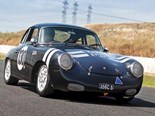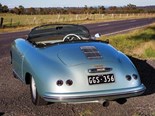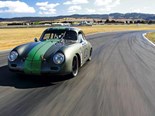Porsche 356 Continental: Reader Resto
 Reader resto: Porsche 356
Reader resto: Porsche 356

 Reader resto: Porsche 356
Reader resto: Porsche 356

 Reader resto: Porsche 356
Reader resto: Porsche 356

 Reader resto: Porsche 356
Reader resto: Porsche 356

 Reader resto: Porsche 356
Reader resto: Porsche 356

 Reader resto: Porsche 356
Reader resto: Porsche 356

 Reader resto: Porsche 356
Reader resto: Porsche 356

 Reader resto: Porsche 356
Reader resto: Porsche 356

 Reader resto: Porsche 356
Reader resto: Porsche 356

 Reader resto: Porsche 356
Reader resto: Porsche 356


|
|
Reader resto: Porsche 356
|

|
|
Reader resto: Porsche 356
|

|
|
Reader resto: Porsche 356
|

|
|
Reader resto: Porsche 356
|

|
|
Reader resto: Porsche 356
|

|
|
Reader resto: Porsche 356
|

|
|
Reader resto: Porsche 356
|

|
|
Reader resto: Porsche 356
|

|
|
Reader resto: Porsche 356
|

|
|
Reader resto: Porsche 356
|
Pete Swanson and his father Maury give us the rundown on their Porsche 356 Continental, built back when sourcing parts required preparation, persistence and no little providence
Porsche 356 Resto
Since I was three years old there was always a Porsche or a Vee Dub in the driveway because Dad loved them so much. Naturally I just got so used to their shape and looks that I got the bug. Dad’s restored four or five Porsche 356s over the years and when I was a much younger man I helped him with his. We undertook the restoration of this one in the 1980s and we didn’t have the internet, so no eBay or Gumtree. It was all done the hard way. We went to swap meets in Ballarat and Bendigo; I made numerous trips to Pomona Swap Meet on the west coast of the US where Dad remembers finding heaps of early Porsche and Volksy parts, back when they were worth nothing. He’s remembers a pile of 356 bonnets stacked on top of each other – you will never see something like that nowadays.
Dad’s 356 is a Continental. These cars were developed for the US market as means of shifting the last of the pre-A 356 stock, the badge designed to emphasise the sophisticated European nature of the car. Very few of these special 356s were built, though, as Ford successfully took legal action against Porsche, fiercely protective as they were of this nameplate’s association with its Lincoln brand. For 1956 the name changed to ‘European.’
This one was originally a Texas car, which a family friend of ours bought and had shipped to Australia. We bought it off him unregistered in 1988 and started straight away – fortunately the paint and interior had already been restored. But everything mechanical needed attention.

We began by pulling the 1300cc Super out, replacing what we could and doing some very basic work like new seals, re-wiring here and there. This was the benefit of such a reliable engine with only 66,000 miles on it at the time. Some things did need to be replaced like the fire retardant lining of the engine bay which had begun to crack and deteriorate. It took four goes at it, getting the original stuff replaced with a vinyl-based product that the fabricator had to make roughly to size and then get us to make a template that he could use to get it perfect.
The gearbox didn’t come out of the Porsche completely but, after stripping all the shabby old underbody deadener, we gave it new seals and bearings. You can still get hold of one here in Australia today if you look in the right places. Although it was in reasonable condition too, Dad and I gave it a thorough clean. I had actually got my hands on an original factory gearbox stand by this time and used it to work on the ’box. It wasn’t all easy though because the factory mounts can be tricky. They’re the same as early Kombi mounts and came in two types – there was a soft compound and these are tougher to change because they warp, while the other type is harder and was used for racing. That was a lesson learned, but we were flying by the seat of our pants a bit at the time with these cars because nobody really wanted them like they do today.
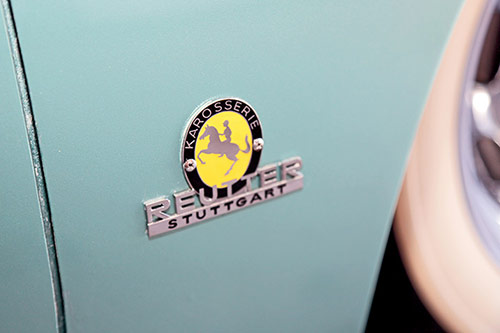
For the suspension we gave it totally new Koni shock absorbers which are fully adjustable. We wanted this knowing we’d be doing plenty of miles in it in future, so for various roads we wanted that customisation. Mind you, they’re only about four inches long so there isn’t much travel in the springs to begin with! But this makes it such a great handler on twisty roads. The link pins were replaced with new-old-stock and the torsion bars front and rear needed all the dirty solid grease scraped and reamed using the original VW/Porsche reamer – another rare and expensive tool. New-old-stock bushes were sourced for the mounts. There are lots of aftermarket bushes for these cars available but I can’t stress how crucial it is to use factory gear with these cars. Some bushes are made in Mexico etcetera from inferior rubber and they just don’t last.
Dad and I pulled the four-wheel brake drums apart too, re-lining the shoes and putting in new wheel cylinders (again, new-old-stock), as well as painting the backing plates. We stripped all the old painted surfaces and powder-coated them. Another point about these cars, especially with the brakes, is we never replaced bolts with modern equivalents. Basically they’re all different sizes these days compared with the original factory bolts and the tolerances are too big – this is why we had to buy as much of everything we could find at swap meets, in wrecker yards and in the classifieds. Even if we didn’t use something, it means we have spares in future.

We had to source a new-old-stock steering box which we were fortunate enough to find in Australia. The original box had run dry and having sat in Texas on blocks for a long time, the box just wore out. We found the new one in a VW specialist wreckers which has since closed down. We got some new tie rod ends, making sure they were German-made Bilsteins.
As for wheels and tyres, we just had the original 15-inch chrome rims polished up because they were in good condition, but we have since found a set of the rare 16-inch wheels which are painted. Tyres are Denman Sports Conventionals, which are very rare.
Other little features on the car include the new-old-stock jack which we swapped another owner for with the NOS interior light which I found by pure chance by asking for it at Rare Spares in Bayswater, Vic. To give you an idea just how hard it was for Dad and I to find other little bits, the glove box handle alone cost a couple of hundred dollars, and the ashtray we found buried at a swap meet.
Talking of finding parts again, Dad actually had to make moulds and then hand-make the eyebrows missing from dash gauges. There are two big ones for the speedo and tacho, and two small ones for oil and fuel, one of each was missing. I always found that really impressive how he made his own – and you wouldn’t pick them from the originals! If you can find the original tooling it makes a world of difference, so that’s why I’ve collected as many tools as I can find, not just parts themselves. I managed to get a lot of the original tools when the Australian VW factory in Melbourne shut down.
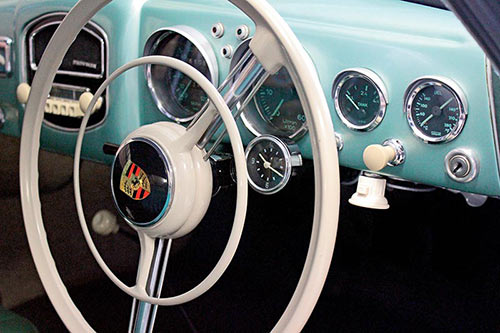
Other final touches include the old luggage case which we found at Ballarat swap meet, and we do have an original stainless luggage rack in the shed but Dad prefers the look of the car without it. In fact Dad’s actually fabricated ten of those luggage racks for others to put onto their 356s which has helped plenty of owners get their cars the way they want them. It’s the same with the exhaust system, although ours is Danish-made from the ’80s! It’s quite a clever piece of design because it uses an organ-style crisscross design to get the deep note from the flat-four.
It’s been such a great result from all our effort when we were younger, so now we get to reap the benefits of all those nights we spent underneath it. Dad’s had enough of restoring 356s for now, at least I think he has! We always aimed for a concours car, which we achieved, but we never put the Porsche on a pedestal – it did the Melbourne Mille, it’s won the 356 parade, and now we just enjoy it as often as we can. That’s the best part though, we get the built-in reliability of these cars combined with all the fun of owning a classic. Actually, I think the best part, really, was doing it with Dad. It’s kept us close, we had a ball together, and it’s given me the drive to take on my own project. I’m working on a Messerschmitt at the moment, have a Beetle under a sheet and I’ve begun on a rare Matador truck too. Thanks a lot, Dad.
Unique Cars magazine Value Guides
Sell your car for free right here
Get your monthly fix of news, reviews and stories on the greatest cars and minds in the automotive world.
Subscribe

.jpg)






.jpg)


